There’s no question that this is my favorite time of year. The native gardens are at their absolute best between May and June, when so many of the plants are in peak bloom.
This proved to be a very busy weekend for us, as we tried to catch up on a rather long project list that’s been pushed to the backburner in recent weeks.
After removing an absurd number of rocks, and old flagstones, we finally finished planting out the last of the three new native garden beds in front of the house.
We’re really excited to see how this entire area fills in over the next few seasons. Of the native sages planted in this part of the garden, Salvia ‘Pozo Blue’ is clearly putting on the best show at the moment.
Not to be outdone though, these Salvia ‘Allen Chickering’ out in the orchard are no slouches either.
I honestly can’t decide which of these two sage varieties I like the best.
As they settle in, the recently planted Eriophyllums are starting to push out a lot more flowers too.
They’re already attracting all sorts of insects, including our native Variable Checkerspot butterflies.
This particular butterfly chose to spend the night on an Eriophyllum lanatum blossom, and didn’t leave until the sun warmed the flowers mid-morning the next day.
Out toward the orchard, the California Honeysuckle (Lonicera hispidula) is blooming profusely, and enticing lots of bees. Come fall, these plants will be sporting clusters of red berries.
The Sticky Monkeyflowers (Diplacus aurantiacus ssp. aurantiacus) are finally blooming too, and should continue flowering over the next few weeks.
Even this newly transplanted Monkeyflower near the fountain is managing to produce a few blooms too.
Our native deerweed (Lotus scoparius) has filled in tremendously over the last few weeks, and is just starting to show signs of blooming. When it does, the hillside above the orchard will be awash in yellow, and the bees will mob their tiny nectar-laden flowers.
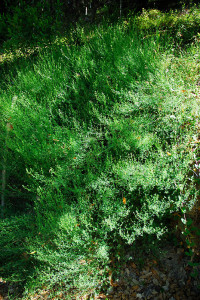
This native deerweed currently looks like a dull wash of green, but soon will be ablaze in yellow flowers
Although the Iris fernaldii are finished for the season, nestled between the Lotus and Monkeyflowers, the last of the Globe Lilies (Calochortus albus) are still blooming.
The deer still devour most of these flowers growing outside of the deer fence, but within the fenced garden, and orchard, these beautiful globe lilies are thriving, and slowly increasing in number.
The native Coffeeberries are almost finished blooming for the season, and setting clusters of fruits. These plants have no difficulty with pollination, as the bees are drawn to their nectar rich blooms.
Native Twinberry (Lonicera involucrata) is also finished flowering for the season, and will soon be sporting pairs of black fruits where the flowers had been.
The last of our tiny native roses (Rosa gymnocarpa) are also winding down for the season.

After a hard winter pruning these native roses (Rosa gymnocarpa) produced plentiful blooms this spring
Closer to the bee hives, Penstemon heterophyllus ‘Margarita BOP’ and ‘Catherine de la Mare’ are both blooming profusely.
California phacelia (Phacelia californica), new to the garden this spring, is now in bloom, and enticing plenty of bumble bees.
Hopefully these plants will self sow over the next few seasons, and fill in across this part of the slope.
The Globe Gilia (Gilia capitata) I started from seed has been blooming for weeks in this part of the garden too, and is still going strong.
The bees, and butterflies, including hoards of skippers, seem to really enjoy these flowers.
The most eyecatching flowers at the moment though are the native California Poppies (Eschscholzia californica), which have been putting on a tremendous show this season.
Even though we had to thin a number of these out because they provide too much cover for gophers and voles, the ones we left behind have been doing extremely well. I suspect we’ll be pulling more seedlings over winter as these plants self sow throughout the orchard.
Unlike some of the cool-toned plants, the advantage of the poppies is that their vibrant orange color makes them pop against the greens of the surrounding woodland, making them clearly visible on the slopes, even when viewed from some distance away along the farm road.
The Sulfur Buckwheat (Eriogonum umbellatum ‘Shasta Sulfur’) that we planted last year is another stand-out on the slopes this spring, and I hope to plant a lot more of it later this year.
The greenhouse is brimming with various plants at the moment. Flats of some other Eriogonum species I propagated from seed are still waiting to move outside, including California Buckwheat (Eriogonum fasciculatum), and Chalk Buckwheat (Eriogonum latifolium).
I’m hoping to plant at least some of these outside the deer fence, but it remains to be seen if the deer will leave them alone.
Numerous cuttings taken from some native sages before they set flower buds this spring, are busily growing roots in the greenhouse too.
As the deer completely ignore these plants here, and the cuttings root so easily, it’s not really possible to have too many of these. Within a year, each one of these plants will be 4-5 feet tall!
Even though our attention has been diverted away from the gardens repeatedly this spring, the native plants, at least, have been content to carry on without too much attention from us. That’s the beauty of native plants, they’re not particularly demanding for time, or attention.
The kitchen gardens, however, require more attention, and are still a little behind schedule. We’ll look more closely at the state of the vegetable and herb garden in the next post, including an up close and personal look at a surprising someone we found lurking in the herb bed this morning!

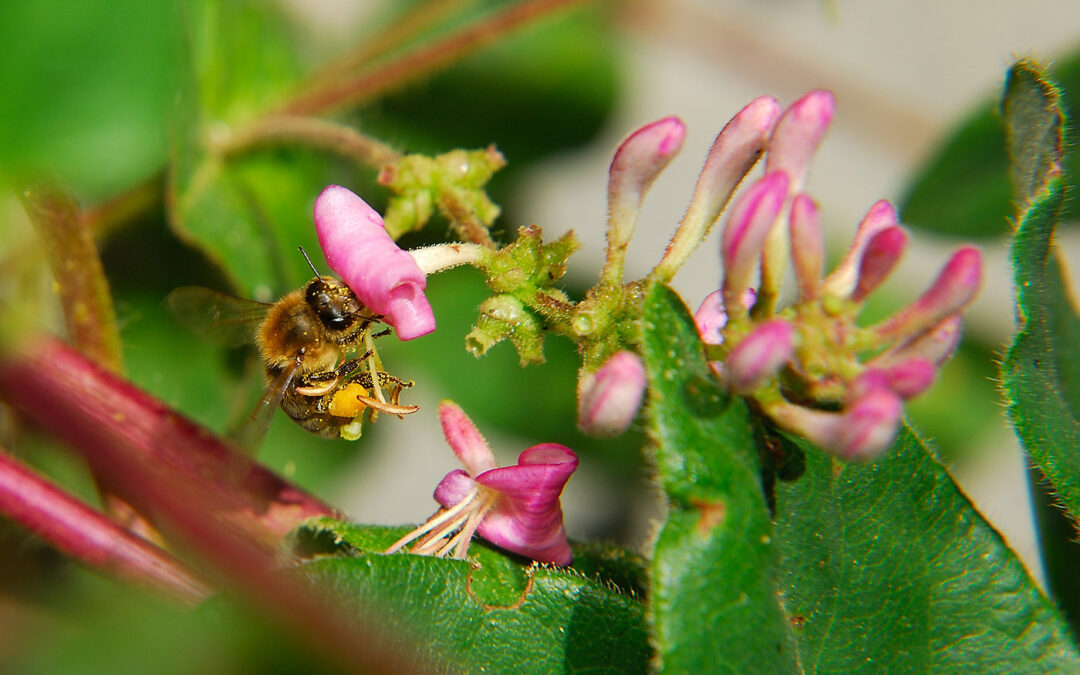
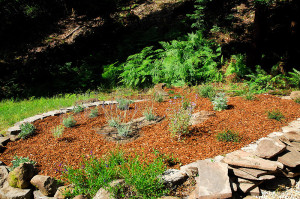
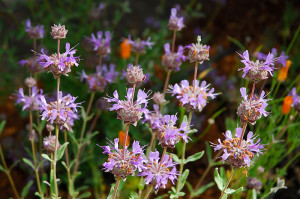
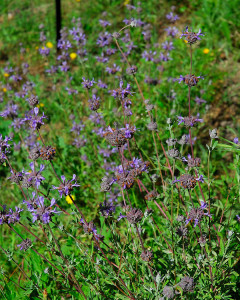
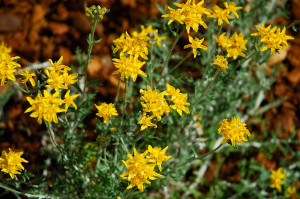
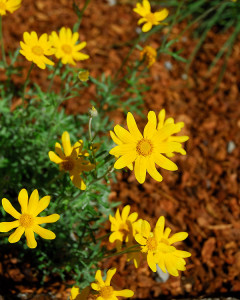
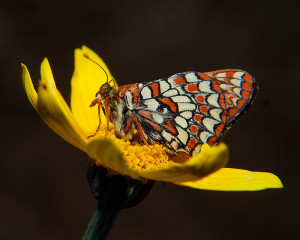

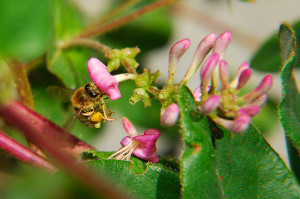
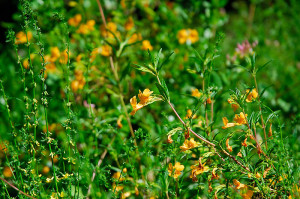
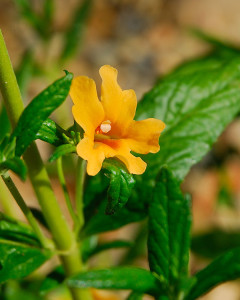
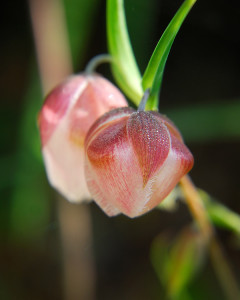
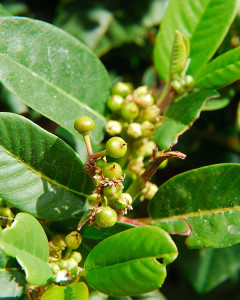

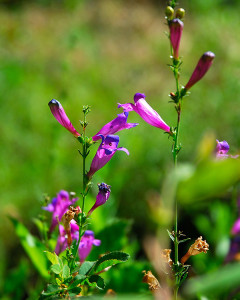
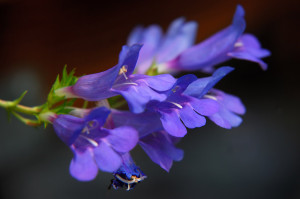
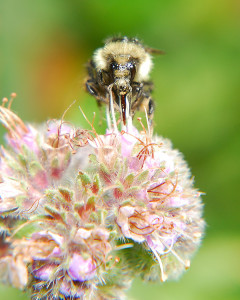
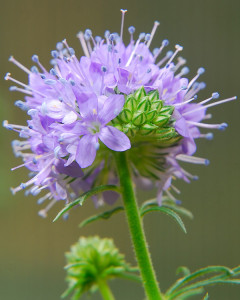
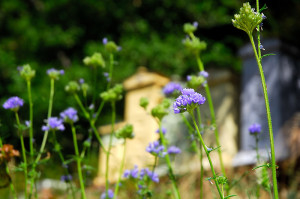
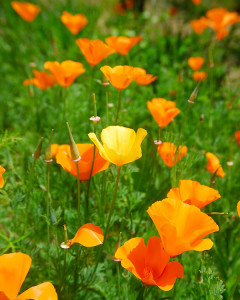
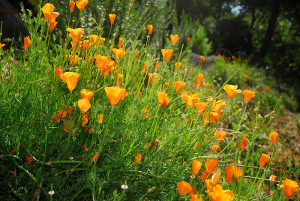
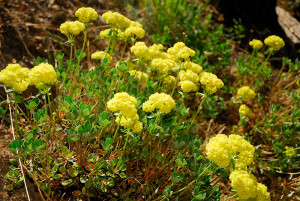
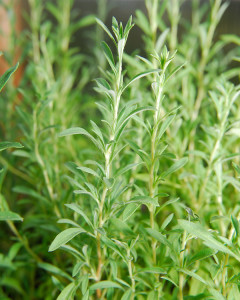
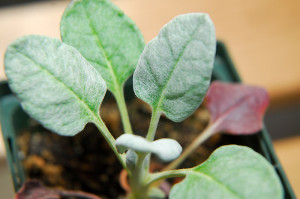
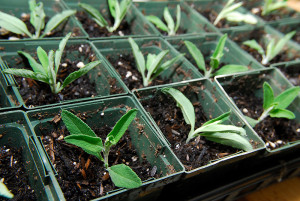







Well I’m glad to say that this post arrived in my inbox just as I was leaving my last comment. I wish we could grow those pretty salvia here – they flower so late in the season here with us that I feel that it really isn’t worth it as the season is then nearly over then. Those pretty poppies I’m sure would take over on the slopes if you didn’t restrict their offspring – a bit like our blue forget me nots that you’ll remember from your childhood days in the UK.
What do you mean Clare when you refer to flats in propagation?
Oh, sorry Rosie. By flats, I mean I’m sowing the seeds in undivided flat seed trays. Most of the vegetable starts I sow in divided plug trays, but some of the native seedlings I prefer to sow openly in flat trays as they’re easier to prick out. Many of our native plants really resent having their roots messed with much, and sometimes I find it difficult to get them out of the plug trays without mashing their roots.
Amazing photos. Thank you so much for sharing.
Thanks for stopping by Mary, glad you enjoyed them.
What a gorgeous native plant garden. It is a feast for our eyes as well as a literal feast for your honeybees. I’ll bet the honey that you produce tastes great. Do you sell your honey?
It’s slowly coming together. I have to say, the gardens here have been a tremendous test of my patience 😉 The little bit of honey we’ve had was excellent. Unfortunately, up to now, our honey harvest has been scant. The bees struggled tremendously last year with the strange wet spring weather, and cold summer. Then we waited too long to harvest this spring, and we lost most of the stored honey when the two largest colonies swarmed. However, we checked the hives this weekend, and two of the colonies we produced from spring splits had a surprising amount of honey in the hive. One colony was actually honey bound, so the plan this weekend is to FINALLY harvest honey. I’m just hoping it’s not too bitter, as the oaks are blooming, which can result in a very tannic tasting honey. We’ll have to wait and see.
Ok, that’s it. I’m moving in. I am a good garden helper, honestly.
It all looks like heaven to me. That Checkerspot…those flowers, yikes.
Keep it up!
Sharon
Careful Sharon, I might take you up on that offer! Some days I feel like we need a dozen extra pairs of hands just to keep up! 😛
Oh I adore those poppies and all the natives that are exotic in my garden…and that fab butterfly…thx for sharing these beautiful flowers and I can’t wait to see those beds fill in…I also had a long weekend where I caught up on many garden chores!
A number of people I’ve spoken to have said it felt more like a “labor day” than a Memorial Day this last weekend 😉 It does feel good to get (somewhat) caught up though.
I would be in poppy heaven. I would love to live where they grow native and wild. Even seeded in, however and wherever they grow, poppy heaven.
They certainly do grow well here, I do love their impact. I just wish the gophers would stop dragging whole plants under ground! 😉
I have been bitten by the native plant bug. I planted a native plant bed this past week. However, we here in my part of the Northeast US have a different set of natives. I love seeing the diversity.
I always enjoying reading about regional native plants. It takes some effort to learn about the plants that are endemic to your region, but I think that’s paid back in their relative ease of care and performance, as they’re adapted to your growing region. I always enjoy seeing the shift in visitors to newly planted native garden areas too.
Oh, that all looks so inviting! Amd I love those butterfl eyes (yes, I did click…) One day I have to come visit.
Well, it looks more impressive up close, so don’t set your hopes too high 😉 I’m still adjusting to planting on such a large scale here, but things are starting to fill in, and have a little more impact. I agree though, the Meeces are overdue for a visit!
You have a lot of native plants in cultivation, no wonder the bees are very satisfied. In our case, we just throw the seeds on the ground and let them grow, i just thin them a bit to give space to others. Even if a plant is not really very nice like my Clerodendrum, as it has not so pleasant leaf odor, i still allow it to flower because of the butterfly. Your checkered butterfly is so beautiful, but we dont have it here.
A lot of our native plants here grow wild on their own. I do go through and weed out the competing invasives as much as I can, to give the natives more room to grow. The Lotus scoparius, Iris, and Calochortus are quite abundant here, which I’m grateful for. Less plants to buy! 😉
Love it. I’m thinking of creating a California natives area on the far side of my property this fall. I’ll come back here for some inspiration.
I have Salvia ‘Aromas’ which is a really nice S. clevelandii hybrid too.
You can also simply mix a few natives in with other non-native plantings too, if you don’t want a pure native border. I love the sages, although some do get quite large, and they mix very well with lavenders too. Another sage I have planted I’m really enjoying is Salvia sonomensis. The new native garden beds are still bordered by some hideous wall blocks that were there when we bought the property. Rather than trying to remove them at the moment, I’m hoping the creeping Salvia, and the Emerald Carpet Manzanitas we planted, will simply hide them. We’ll have to see if that works! 😉
Hi Clare,
Lovely photos, and it’s really nice to see so many native plants (as I’ve said before!)
I finally managed to source some natives last weekend and am now kicking myself for not picking up more, so I’ll be back again over the weekend or next week to get others too.
Glad you found a good selection of native plants. I always think I’m buying too many when I go the nursery, but find I didn’t get enough once I bring them all home. It’s fun to have an excuse to go back though 😉
It is fun seeing all these native plants that I know nothing about except the California poppy—very beautiful.
The diversity of native plants across the country is quite remarkable. I always think it’s fun to see natives growing in gardens far away from where you live, especially if they’re from the same genus as a native planted in your own garden.
What a fantastic collection of native plants. There’s lots of blooms there for your bees to feed on. I’m particularly fond of the california poppies. The sun shining through the orange blooms makes me happy.
We certainly seem to increasing the diversity of plants available to the bees. Hopefully as some fill in, we’ll also increase the volume of plants too. I love how the poppies seem to be illuminated by the sun. They really do seem to glow when the light hits them just right.
How wonderful to have natives that the butterflies love, and are low maintenance. I notice that in the summer as the vegetable garden demands more attention, my flower gardens tend to suffer a bit. Veggies just don’t wait!
Veggies don’t wait! We’ve made some of ours wait in the greenhouse a little longer than usual, and they almost grab me as walk in through the greenhouse door now! 😉
Ahhhh….such beauty. I love the wild rose!
Thanks Carla. I love this little rose. I never have to do anything to it, I don’t even water it. It’s a bit prickly, but the tiny little flowers are about the size of my thumbnail, and such a delight to see in the spring 🙂
What a wonderful variety of native plants you have in your new garden. I do love the orange glow of the poppies. Although my climate is so different from yours, I too find this time of year both delightful and very busy in the garden. After a week of rain that mostly kept me out of the garden, I’m now trying to take advantage of some warm, dry, sunny weather to get caught up on spring garden chores in the few days that are officially left of spring!